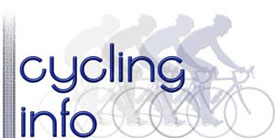Traithlon bikes are generally optimised for aerodynamics, like time trial bikes. In most triathlon’s drafting is illegal so riders need to maintain most aero position possible to maximise speed. In some triathlon’s like World Cup and World Championship, drafting is legal and riders aren’t allowed to use a full time trial bike. In these events, triathlete’s often use clip on tribars to gain some speed, but maintain manoeuvrability of bike.
Position
Triathlon bikes tend to have an ‘aggressive’ low profile. The first triathlon bikes used a 650c front wheel and 700c back wheel. This helped front end to be lower. Nowadays 650c wheels have fallen out of fashion, but a low front end is achieved by a steep seat tube and short stem.
In the late 1980s, triathlon bikes helped to push the boundaries of cycling. A key development was the Scott tribar developed in 1989. This was incorporated by Quintana Roo to build one of first triathlon specific time trial bikes.
Tips on Triathlon Bikes
- See tips on improving aerodynamics - many of these are cheap
- Disc wheels for time trials – A disc wheel is one best ways to make faster.
- Skin suits
- Wind tunnel testing
- Training for time trials
Quintana Roo Superform
A little bit of triathlon history – a Quintana Roo Superform, with 80 degree seat tube and Scott tri bars.
Quintana Roo Kilo Carbon
The modern development of the Quintana Roo. The Kilo is a full carbon fibre bike at a very reasonable price of £1,200. With SRAM Rival groupset, this makes a very good entry level triathlon bike, which will be competitive in the amateur scene.
- Wheels: Shimano R500Tyres:
- Tyres: Continental Ultra Sport
- Groupset: SRAM rival
- Frame: Carbon
- Brakes: Tektro R312
- Handlebars:Premetec
- TT bar Straight gauge OSAero Bars:Profile ZBS
Overall, this is an excellent entry level triathlon bike. The wheels and tyres are an obvious target for upgrading. But, with strong carbon frame and fork and SRAM groupset, this is a good value way to get a decent bike. The aero seat post is also a nice touch. Looks pretty smart in the black and white combination.
Quintana Roo bikes at Evans Cycles
Trek SPD Concept
Trek SPD Concept 7.2
Trek are a relative newcomer to the triathlon market. But, they have used their expertise to develop a triathlon specific bike. Some models use the 200 Series Aluminium frame, higher end models use carbon fibre. But, both are moulded with same aero technology.
THe Trek SPD 2.5 uses a 200 Series aluminium frame, which is light and developed to maximise aerodynamics. The shape of the frame ( Kammtail Virtual Foil KVF) is developed with wind tunnel technology and Trek make strong claims about its performance in comparison to other bikes. There are nice touches such as hidden front and rear brakes and internal frame routing. It is fast and there are several different models to choose from. The Trek Project One allows you to customise different parts of the bike, which is nice.
Trek Concept triathlon bikes at Evans Cycles
Triathlon Bike Under £1,000
If you can cope with a triathlon bike slightly resembling a tiger, the Fuji Aloha gives a good entry level triathlon bike for under £1,000
- Frame: A6 SL Alloy, Custom-Butted with Aero Shaped Down Tube & Seat Tube
- Fork: Fuji aero carbon
- Groupset: Mixtures of Shimano Tiagra and Shimano 105.
- Weight: Approx. 9.3kg / 20.5lbs
- Fuji Aloha at Evans Cycles
Custome Triathlon Bikes
Fastest Ever Triathlon Bike?
Related
- Time trial Bikes
- Time Trial Bikes at Wiggle
- Time Trial Bikes at Evans Cycles






No comments yet.